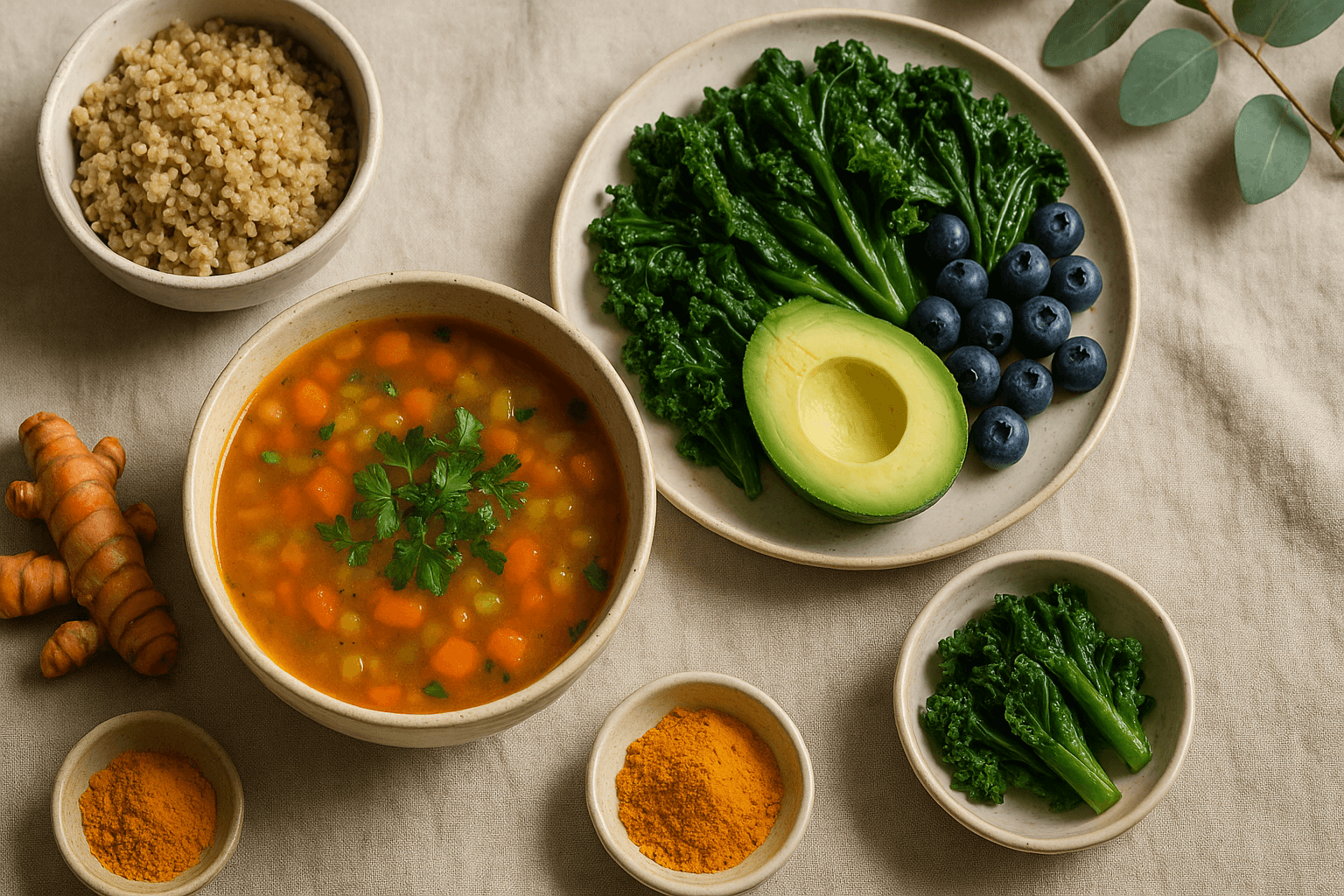Inflammation & Gut Healing
Published on May 28, 2025

Balanced Healing: How to Use Special Diets to Reduce Inflammation, Regenerate Your Gut and Reclaim Your Health
Special diets aren't meant to be cages — they're tools. Used with care, they can reduce inflammation, support gut healing, and bring your system back to balance. This guide shows you how to use them deliberately and walk away stronger, not more restricted.
When Do You Need a Special Diet?
These patterns are helpful when symptoms persist without cause:
Bloating, cramps, irregular digestion
Shifting food intolerances
Fatigue, brain fog, rashes, joint pain
Autoimmune flare-ups
Histamine sensitivity after meals
Post-antibiotic or post-infection imbalance
What Makes a Diet “Special”
They remove common triggers while focusing on healing foods. Choose based on your symptoms:
AIP (Autoimmune Protocol)
Grain-, dairy-, nightshade-, seed- and nut-free
Supports: eczema, Hashimoto’s, joint pain
SCD (Specific Carbohydrate Diet)
Removes complex carbs to reduce fermentation
Supports: SIBO, Crohn’s, IBS
Low-FODMAP
Reduces fermentable carbs
Supports: IBS, bloating, gas
Whole30 / Anti-Inflammatory Resets
Removes sugar, gluten, dairy, processed food
Supports: general inflammation, sugar addiction
The 3-Phase Reset Framework
Phase 1: Calm (10–21 Days)
Remove major inflammatory triggers
Eat cooked meals with protein, fiber, fat
Drink broths, herbal teas
Support digestion: enzymes, bitters, gentle movement
Goal: lower inflammation, relieve symptoms
Phase 2: Discover (3–6 Weeks)
Reintroduce one food every 3–4 days
Track digestion, skin, energy, joints, mood
Use base meals for clarity
Goal: identify tolerated vs reactive foods
Phase 3: Expand (Ongoing)
Keep a solid base of “green light” foods
Strategically reintroduce joyful foods
Rotate variety for microbiome health
Goal: return to freedom with structure
Sample 7-Day Reset Menu (AIP + Low-FODMAP Inspired)
Day 1
Breakfast: turkey patties + sautéed greens + avocado
Lunch: chicken broth soup with carrots + zucchini
Dinner: salmon + mashed parsnip + spinach
Day 2
Breakfast: root veg hash + ground lamb + herbs
Lunch: chicken salad + cucumber + arugula
Dinner: slow-cooked beef stew + roasted carrots
Day 3
Breakfast: leftover stew + sautéed kale
Lunch: tuna lettuce cups + pickled beets
Dinner: turkey meatballs + squash noodles + basil oil
Day 4–7
Repeat and rotate with:
Sweet potato mash
Coconut yogurt + cinnamon
Sardines or salmon
Liver pâté + roasted veg
Daily Hygiene
Water: 2.5–3L/day
Walk: 15 min post-meal
Sleep: 7.5–9 hrs
Lifestyle Support to Reset the Reset
Eat without distractions
Chew thoroughly
Light movement before/after meals
Track symptoms loosely
Prioritize laughter, connection, nature
Quiet mornings, screen breaks
When to Reintroduce Foods
You’re ready when:
Symptom-free for 10–14 days
Meals no longer trigger fog or fatigue
Mood, digestion, sleep are consistent
You’re excited, not scared, to try new foods
Avoid Common Mistakes
Mistake 1: Staying restricted too long
→ Solution: Always have an exit strategy
Mistake 2: Being too rigid
→ Solution: Aim for flexibility, not perfection
Mistake 3: Layering too many protocols
→ Solution: Start simple, add only if needed
Mistake 4: Not meal planning
→ Solution: Choose 3 go-to breakfasts, lunches, dinners
Smart Reintroduction Tips
Introduce one food at a time
Use base meals with boring ingredients
Track in a 3-color system:
Green = safe
Yellow = maybe
Red = reactive (pause, retest later)
Retest in calm, rested states
Bottom Line: Use the Tool — Don’t Live in It
A therapeutic diet is a scalpel, not a new lifestyle. It helps you:
Relieve symptoms
Build body trust
Create structure for lasting freedom
And it ends with joy, variety, and nourishment — not fear.
Because food is more than fuel. It’s rhythm. It’s medicine. It’s memory.








